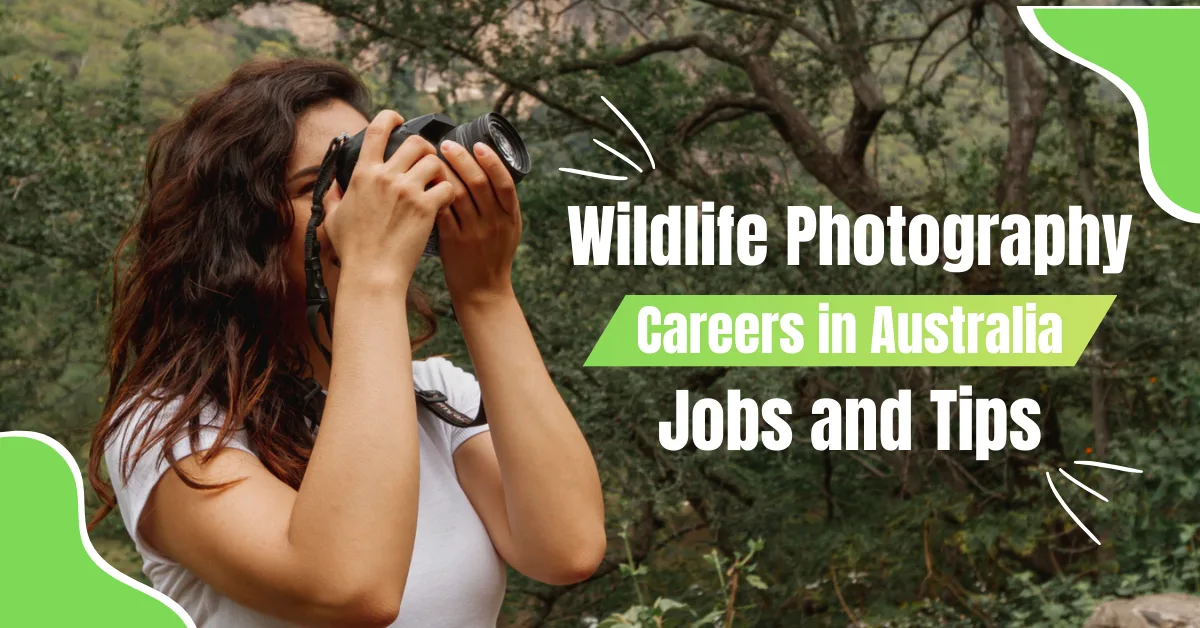Introduction
Australia is a paradise for wildlife photographers. From kangaroos hopping across open plains to crocodiles in the Northern Territory and vibrant birdlife in rainforests, this country offers unmatched opportunities for professionals and enthusiasts. But breaking into wildlife photography as a career is not easy – it requires passion, skills, and the right approach.

In this article, we’ll explore the real opportunities for wildlife photographers in Australia, provide practical tips to find jobs, share insights from real-world scenarios, and even look at expected salaries to help you build a sustainable career.
Why Australia is a Hotspot for Wildlife Photography
Australia is home to more than 370 mammal species, 900 bird species, and countless reptiles and marine animals. For photographers, this means endless diversity.
- Unique Species: Kangaroos, koalas, Tasmanian devils, quokkas, platypus.
- World-Famous Locations: Great Barrier Reef, Kakadu National Park, Kangaroo Island.
- Conservation Projects: Growing demand for photographers to work with NGOs, tourism boards, and wildlife research teams.
Case Example: A photographer in Cairns partnered with a reef conservation project to document coral health. His images not only spread awareness but also landed him contracts with eco-tourism companies.
Types of Wildlife Photography Opportunities in Australia
1. Employment with Wildlife & Conservation Organizations
Many NGOs and government projects hire photographers to document wildlife, habitats, and conservation efforts.
- Example: Australian Wildlife Conservancy often works with media professionals to showcase endangered species.
2. Eco-Tourism & Travel Photography
Australia’s eco-tourism is booming. Tour operators hire photographers for promotional content, brochures, and online marketing.
- Example: Photographers working in Kangaroo Island often provide visuals for both tour companies and magazines.
3. Freelance & Stock Photography
Platforms like Shutterstock, Getty Images, and Alamy have strong demand for Australian wildlife photos. High-quality shots of rare species can sell at premium rates.
4. Media & Publishing
Magazines like Australian Geographic regularly commission wildlife photography for articles, documentaries, and exhibitions.
5. Educational & Research Projects
Universities and research groups sometimes contract photographers to capture fieldwork, animal behavior, and environmental changes.
Skills You Need to Succeed
Wildlife photography isn’t just about owning a good camera. Employers and clients look for:
- Technical Expertise: Mastery of lighting, composition, and fast-action photography.
- Field Skills: Patience, knowledge of animal behavior, survival skills in tough environments.
- Storytelling Ability: Turning a simple photo into a narrative about conservation or travel.
- Business Sense: Negotiating contracts, licensing, and marketing your portfolio.
How to Find Wildlife Photography Jobs in Australia

1. Job Boards & Websites
- Seek.com.au and Indeed: Post occasional roles for media professionals in environmental sectors.
- Conservation Job Boards: Sites like Environment Jobs and EthicalJobs list photography roles in conservation.
2. Networking with Eco-Tourism Operators
Tour operators in Darwin, Cairns, and Tasmania often need promotional material. Networking here can land you repeat clients.
3. Social Media Branding
Instagram and Facebook pages dedicated to Australian wildlife photography help you attract collaborations.
Practical Tip: Use hashtags like #WildlifeAustralia, #NaturePhotography, and tag tourism boards.
4. Volunteering → Paid Work
Many photographers start by volunteering with conservation groups. This builds credibility and portfolio strength, which later translates into paid contracts.
5. Find Global Opportunities on Job Portals Like Ideal Job USA
Apart from relying only on Australian platforms, you can also explore international job portals such as Ideal Job USA, where wildlife photography and other creative roles are regularly listed. This gives you the chance to apply directly for global opportunities and not just limit yourself to local openings, making it easier to connect with employers worldwide who are looking for talented photographers.
Wildlife Photographer Salary in Australia
Wildlife photography income in Australia varies depending on whether you work full-time, freelance, or on project contracts. The table below gives an overview:
| Job Type | Average Salary / Earnings (AUD) | Details |
|---|---|---|
| Entry-Level Photographer (Assisting NGOs, tourism companies) | $40,000 – $55,000 / year | Suitable for beginners with basic portfolio. |
| Professional Wildlife Photographer (Full-time role) | $60,000 – $85,000 / year | Often hired by magazines, tourism boards, or conservation projects. |
| Freelance Photographer (per project / day rate) | $300 – $800 / day | Depends on client, location, and project size. |
| Stock Photography (Royalty-based) | $1 – $5 per image (average sale) | Passive income; earnings grow with large photo library. |
| International Assignments (Documentaries, Research Projects) | $90,000+ / year (or $1,000+ / week contract) | High-paying but competitive; requires strong portfolio and experience. |
Pro Tip: Many successful photographers combine tourism projects, stock photo sales, and freelance contracts to create multiple income streams.
Practical Tips for Aspiring Wildlife Photographers in Australia
- Start Local, Then Expand
Don’t wait for big national parks. Begin with local reserves, bird sanctuaries, or even urban wildlife. Build a strong portfolio first. - Invest in the Right Gear
- Telephoto lens (200mm+ for capturing animals at a safe distance).
- Weather-sealed camera (Australia’s climate varies from rainforests to deserts).
- Tripod & camouflage clothing for stability and discretion.
- Understand Wildlife Laws & Ethics
Never disturb animals for the sake of a shot. In Australia, penalties apply if you harm or interfere with protected species. Ethical photography is highly respected. - Add Video Skills
Many NGOs and tourism companies now demand short wildlife documentaries. Adding video skills increases your hireability. - Build an Online Portfolio
Create a personal website showcasing your best work. Add client testimonials, behind-the-scenes blogs, and SEO-optimized galleries.
Challenges You Might Face (And How to Overcome Them)
- Unpredictable Wildlife: Solution → Learn animal behavior and track patterns.
- High Competition: Solution → Find your niche (birds, marine life, macro photography).
- Expensive Equipment: Solution → Start with second-hand gear, rent lenses when needed.
- Unstable Income as a Freelancer: Solution → Diversify with stock photos, workshops, and prints.
Future of Wildlife Photography in Australia
With climate change and conservation becoming global priorities, demand for skilled wildlife photographers is rising. Both digital media and eco-tourism industries are expected to grow, opening more opportunities for passionate professionals.
Conclusion
Wildlife photography in Australia is not just about taking beautiful pictures—it’s about contributing to conservation, storytelling, and cultural awareness. With the right skills, persistence, and networking, photographers can build a sustainable career while enjoying the privilege of working in one of the most biodiverse countries in the world.
Whether you’re a beginner or an experienced professional, Australia offers endless opportunities to make a mark in wildlife photography.


